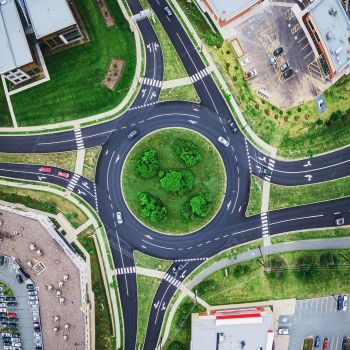4T-Intersection Safety
The Intersection Safety course was developed to discuss the issue of safety as it relates to traffic studies and plan design. Despite improved intersection design and more sophisticated applications of traffic engineering measures, the annual toll of human loss due to motor vehicle crashes has not substantially changed in more than 25 years. Perhaps with a better knowledge behind the crash statistics and countermeasures, designers can implement designs with better intersection safety. This course will brief the reader on national highway safety statistics.
The Intersection Safety course was developed to discuss the issue of safety as it relates to traffic studies and plan design. Despite improved intersection design and more sophisticated applications of traffic engineering measures, the annual toll of human loss due to motor vehicle crashes has not substantially changed in more than 25 years. Perhaps with a better knowledge behind the crash statistics and countermeasures, designers can implement designs with better intersection safety. This course will brief the reader on national highway safety statistics. It will also discuss the difference between nominal and substantive safety. Human factors as related to intersection safety will be covered. Design of intersections for older drivers is also covered. There is a review of prediction of safety at intersections and provide a crash rate equation. Equations for crash frequency models for stop control of minor intersections are provided. Roadway geometrics as they relate to intersection design will be discussed. Red light running is be discussed and ideas to increase the likelihood of stopping are be provided. Screening techniques and countermeasures will be covered. A six step crash mitigation process is provided to identify high crash locations and identify countermeasures. The designer can use these steps to identify sites with potential safety problems, identify contributing factors and determine appropriate countermeasures to be used in plans preparation. The countermeasures are discussed in detail and include signing, pavement marking, lighting and signalization features. The course is designed to provide a basic knowledge of intersection safety from which an engineer can use this information in traffic studies and plan design.
| Learning Objectives | Objectives
|
|---|---|
| Contact Hours | 4 Horas |
| CIAPR courses | CURSO TECHNICO |
| Instructor | Debra Kennaugh, P.E. |
| Devices | Desktop, Tablet, Mobile |
| Language | English |
SLSTECH System Requirements
To run our system effectively you should, as a minimum, use the system components listed on this page. If you do not, the system may still work but some functionality may be lost. Workplace IT environments' internal configurations can also restrict the functionality of our system. Access to content may be affected, as may the possibility of uploading files. File size limitations may also apply. Workplaces may also have older versions of software, and our system may not perform well with these.
Operating system
-
Recommended: Windows 7, 10, Mac OSX Sierra, iPad IOS10
Internet speed
-
Use a broadband connection (256 Kbit/sec or faster—this will ensure that you can view videos and online presentations) through USB wireless modem, ADSL, T1/T2, fibre optic or cable.
-
Dial-up access will be significantly slower, and we do not recommend it for using our system.
Internet browsers
Compatible browsers include:
-
Google Chrome 32 bit version 50 or later (recommended for optimal compatibility, this has been thoroughly tested on Windows)
Safari 10 or later (recommended for optimal compatibility, this has been thoroughly tested on Mac)
Note that add-ons and toolbars can affect any browser's performance.
-
MS Internet Explorer is not recommended
Settings
We recommend that the following be enabled:
-
Cookies
-
Pop-ups (in both Internet browser and security software)
-
Javascript
-
We recommend that you use the latest version of Adobe Flash Player.
Software
-
We recommend that you use the latest version of Adobe Acrobat Reader.
-
To view all the resources uploaded to Hazmat Authority, you will probably need to have Microsoft Office (Word, Excel, PowerPoint) or an equivalent (e.g. Open Office, Viewer) installed.
Security
With all firewalls, ensure that you enable uploading of files.











Validate your login
Sign In
Create New Account